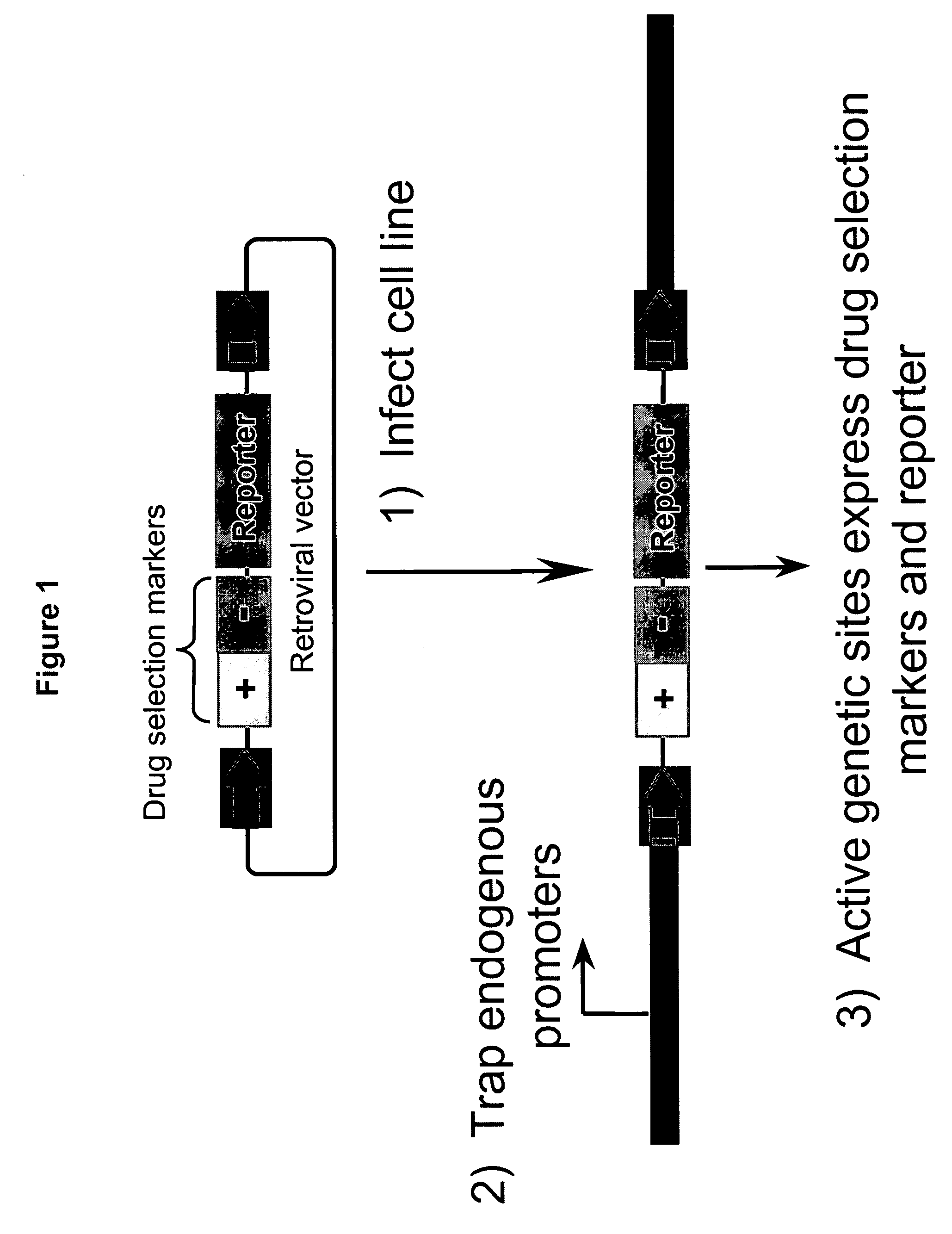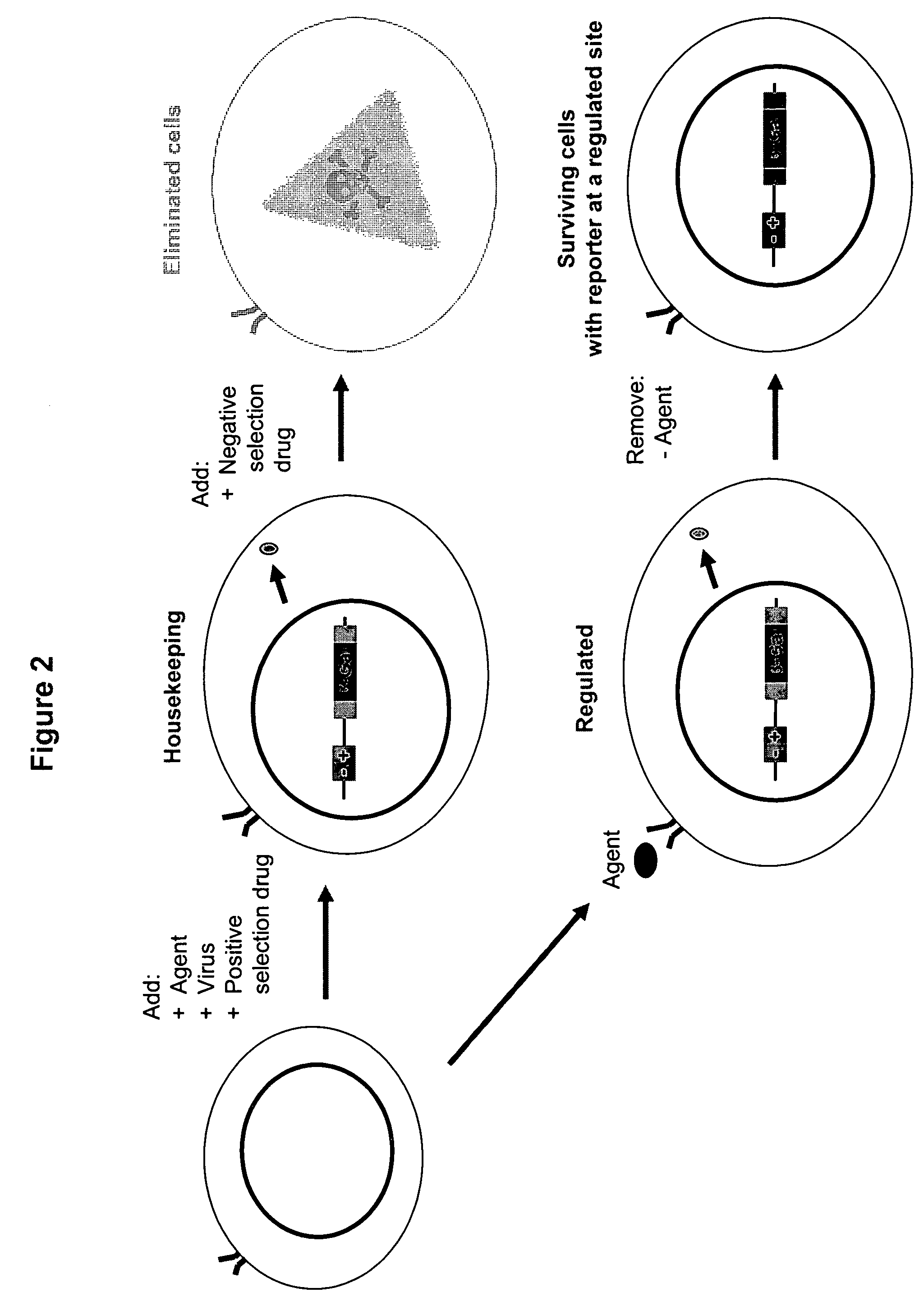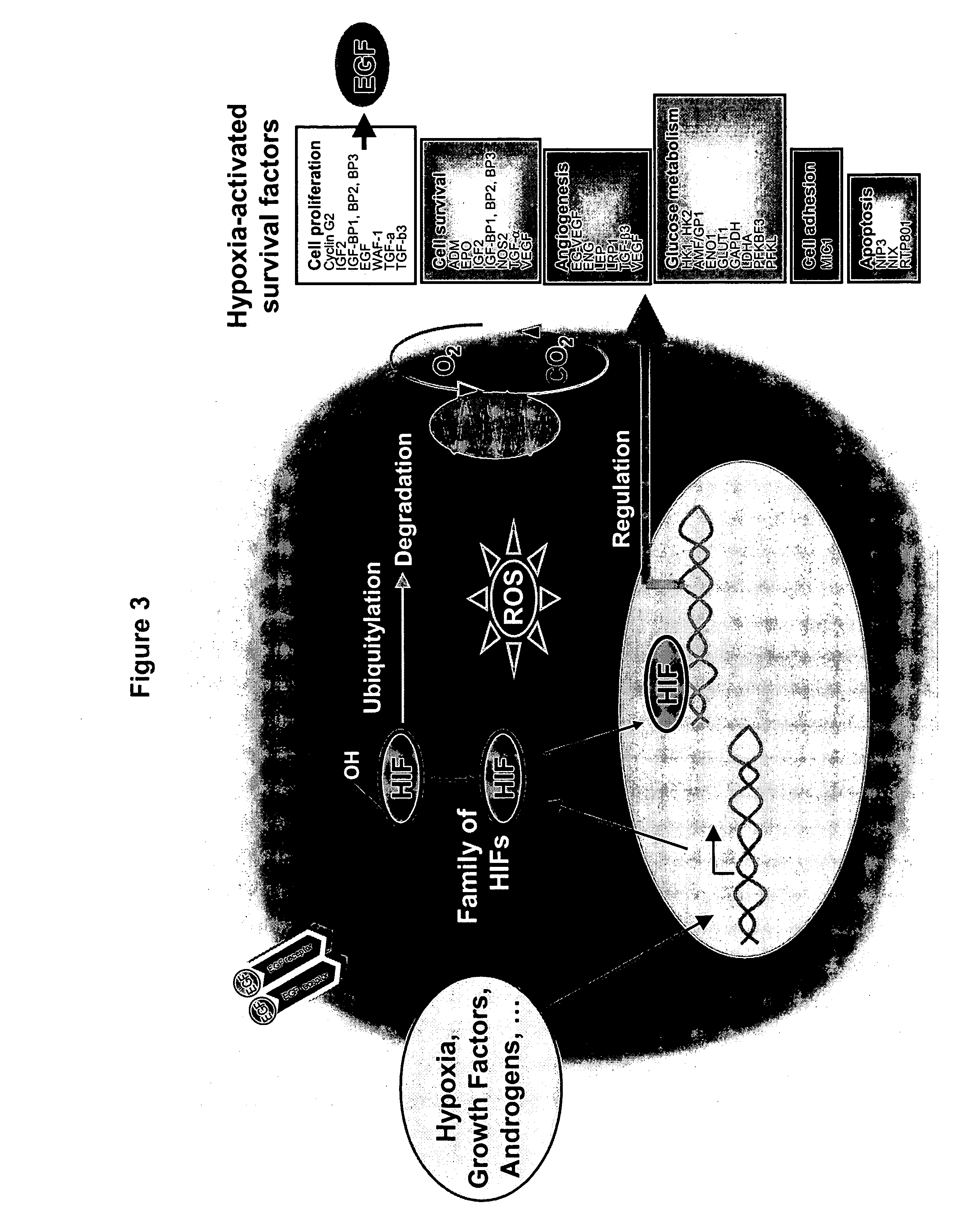Use of Na*/K*-ATPase inhibitors and antagonists thereof
a technology of at which is applied in the field of use of na */k *atpase inhibitors and antagonists thereof, can solve the problems of human toxicity, human toxicity, and therapeutic use of herbal cardiac glycosides, and achieve the effects of preventing the normal hypoxic response, reducing heart rate, and increasing blood pressur
- Summary
- Abstract
- Description
- Claims
- Application Information
AI Technical Summary
Benefits of technology
Problems solved by technology
Method used
Image
Examples
example i
Sentinel Line Plasmid Construction and Virus Preparation
[0271]FIG. 1 is a schematic drawing of the Sentinel Line promoter trap system, and its use in identifying regulated genetic sites and in reporting pathway activity. Briefly, the promoter-less selection markers (either positive or negative selection markers, or both) and reporter genes (such as beta-gal) are put in a retroviral vector (or other suitable vectors), which can be used to infect target cells. The randomly inserted retroviral vectors may be so positioned that an active upstream heterologous promoter may initiate the transcription and translation of the selectable markers and reporter gene(s). The expression of such selectable markers and / or reporter genes is indicative of active genetic sites in the particular host cell.
[0272] In one exemplary embodiment, the promoter trap vector BV7 was derived from retrovirus vector PQCXIX (BD Biosciences Clontech) by replacing sequence in between packaging signal (Psi+) and 3′ LT...
example ii
Sentinel Line Generation
[0274] Target cells were plated in 150 mm tissue culture dishes at a density of about 1×106 / plate. The following morning cells were infected with 250 μl of Bionaut Virus #7 (BV7) as prepared in Example I, and after 48 hr incubation, 20 μg / ml of phleomycin was added. 4 days later, media was changed to a reduced serum (2% FBS) DMEM to allow the cells to rest. 48 h later, ganciclovir (GCV) (0.4 μM, sigma) was added for 4 days (media was refreshed on day 2). One more round of phleomycin selection followed (20 μg / ml phleomycin for 3 days). Upon completion, media was changed to 20%FBS DMEM to facilitate the outgrowths of the clones. 10 days later, clones were picked and expanded for further analysis and screening.
[0275] Using this method, several Sentinel Lines were generated to report activity of genetic sites activated by hypoxia pathways (FIG. 4). These Sentinel lines were generated by transfecting A549 (NSCLC lung cancer) and Panc-1 (pancreatic cancer) cell l...
example iii
Cell Culture and Hypoxic Conditions
[0276] All cell lines can be purchased from ATCC, or obtained from other sources.
[0277] A549 (CCL-185) and Panc-1 (CRL-1469) were cultured in Dulbecco's Modified Eagle's Medium (DMEM), Caki-1 (HTB-46) in McCoy's 5a modified medium, Hep3B (HB-8064) in MEM-Eagle medium in humidified atmosphere containing 5% CO2 at 37° C. Media was supplemented with 10% FBS (Hyclone; SH30070.03), 100 μg / ml penicillin and 50 μg / ml streptomycin (Hyclone).
[0278] To induce hypoxia conditions, cells were placed in a Billups-Rothenberg modular incubator chamber and flushed with artificial atmosphere gas mixture (5% CO2, 1% O2, and balance N2). The hypoxia chamber was then placed in a 37° C. incubator. L-mimosine (Sigma, M-0253) was used to induce hypoxia-like HIF1-alpha expression. Proteosome inhibitor, MG132 (Calbiochem, 474791), was used to protect the degradation of HIF1-alpha. Cycloheximide (Sigma, 4859) was used to inhibit new protein synthesis of HIF1-alpha. Catala...
PUM
 Login to View More
Login to View More Abstract
Description
Claims
Application Information
 Login to View More
Login to View More - R&D
- Intellectual Property
- Life Sciences
- Materials
- Tech Scout
- Unparalleled Data Quality
- Higher Quality Content
- 60% Fewer Hallucinations
Browse by: Latest US Patents, China's latest patents, Technical Efficacy Thesaurus, Application Domain, Technology Topic, Popular Technical Reports.
© 2025 PatSnap. All rights reserved.Legal|Privacy policy|Modern Slavery Act Transparency Statement|Sitemap|About US| Contact US: help@patsnap.com



